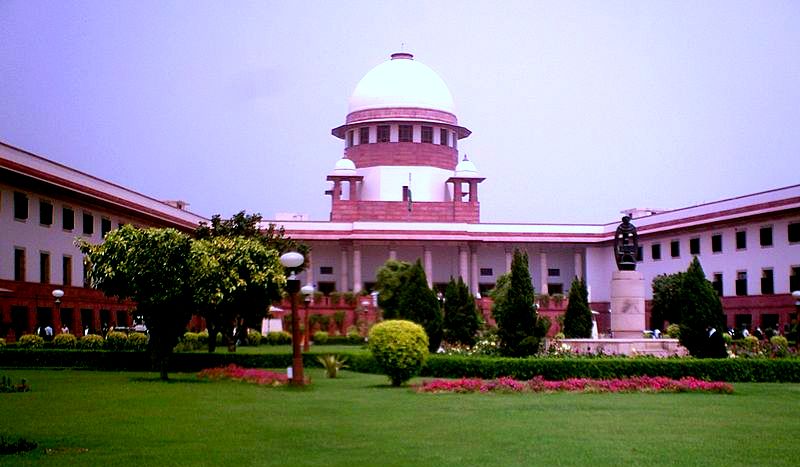Mounting Backlog: Over 5.2 Crore Court Cases Await Resolution in Indian Judicial System

Saurav Chauhan
Pune, 13th August 2023: Our proud nation, with its rich legal history, stands at a crucial juncture. The Indian Constitution, our beacon since 1950, entrusts our judiciary with the monumental task of ensuring justice. So, how have we fared? Let’s embark on a journey guided by the data.
Starting with a staggering 5.2 crore (52 Million) unresolved cases, half of which have been dormant for about five years. The enormity becomes clearer when we consider Niti Aayog’s 2018 prediction: to clear the backlog, it would take 324 years. A judicial marathon, it seems.
Judicial Chronicles: A Deep Dive into High Courts
Allahabad at the top: Allahabad High Court, with over 1,000,000 pending cases, tops the chart. On the opposite spectrum, Sikkim High Court has a minimal 100, signifying efficiency or a lesser load.
Swift vs Stagnant: Delhi High Court takes the crown with the highest disposal rate, clearing 90,000 cases annually. Jammu & Kashmir, unfortunately, seems entangled with a disposal of a mere 5,000 cases each year.
Women in Litigation: Cases filed by women have reached an impressive 400,000 in states like Delhi and Madhya Pradesh. The progress? Encouraging, with Delhi High Court disposing of nearly 70% of them.
Elders Seeking Justice: Maharashtra and Uttar Pradesh witness a surge in cases filed by senior citizens, cumulatively touching 50,000. Their resolution? Prompt in Maharashtra with over 60% cases being cleared.
Digital Evolution: Over 80% of the cases filed in the last year in High Courts like Delhi and Bombay were through online platforms, showcasing digital adoption.
Case Age: Half the cases in states like Karnataka and Tamil Nadu have been pending for over 5 years, signalling the depth of the backlog.
Justice for Children: Over 5,000 cases pertain to child rights in High Courts like Kerala and Andhra Pradesh. The focus? Growing, with Kerala clearing 60% of them.
Crime & Punishment: Criminal cases are a dominant category in states like Bihar and West Bengal, with over 200,000 in each. Their disposal rates? Varied, with Bihar clearing 40% and West Bengal 55%.
Commercial Conflicts: Delhi and Maharashtra High Courts see a high influx of commercial disputes, totalling 100,000. Their resolution rates? Steady, with both states disposing of over 60% of such cases.
Petitions Peak: Writ petitions form the bulk in states like Madhya Pradesh and Chhattisgarh, with both seeing 80,000 such cases. Their clearance? Above par, with both states resolving around 70% of them.
Global Courtrooms: India in the Spotlight
Let’s delve into the global judicial landscape. India, boasting a massive populace of 1.4 billion, is inundated with an overwhelming 50.2 million cases. Take a moment to digest that number.
However, there’s another dimension. Our judge-to-population ratio stands at 21 per million. Intriguingly, this is on par with Brazil, Indonesia, and other developing and highly populated countries. Shifting our gaze to China, a country with a population comparable to ours, we find a striking disparity. They grapple with just 3 million cases.
The USA, on the other hand, presents an interesting contrast. With 4.3 million cases, their judicial strength is commendable. They have a stellar 104 judges for every million citizens, setting a standard that’s truly aspirational.
Judicial Rhythms: Keeping Up with the Times
The ceaseless pursuit of justice by Indian courts is evident not just in the sheer number of cases handled but also in the dedication of its judges. The Indian Supreme Court exemplifies this commitment by working 190 days a year. To put it in perspective, it considerably outpaces its global counterparts: the USA’s Supreme Court sits for 68 days, Australia’s for 97 days, South Africa’s for 128 days, the UK’s for 149 days, Israel’s for 159 days, and Bangladesh’s for 183 days.
But the effort isn’t just about the number of days; it’s about the impact and recognition. One might wonder about the international standing and perception of India’s Supreme Court. A pivotal indicator is the number of times foreign apex courts cite its judgments. Such citations signify respect, recognition, and the substantive value of the decisions rendered.
Between 2009 and 2020, the Indian Supreme Court’s decisions were cited a whopping 510 times by the apex courts of 43 countries. This is not just a numerical achievement but an endorsement of the Supreme Court’s legal depth and its contribution to global legal discourse. Such widespread international citation is a testament to the Supreme Court’s credibility and its robust role in shaping legal precedents.
Another feather in its cap is the way the Indian judiciary has seamlessly integrated technology, especially during trying times like the Covid-19 pandemic. The swift pivot to virtual hearings, e-filing, and digital case management underscored the system’s resilience and adaptability.
The Verdict: Gearing Up for a Judicial Evolution
The Indian legal sphere is vibrant. The data sketches a detailed tableau: a plethora of cases, some courts excelling, and others facing hurdles. Yet, optimism prevails. Endeavours like NDAP amplify transparency, illuminating the way ahead.
For India to transition into a developed nation, a judicial overhaul is imperative. The roadmap? A blend of refined efficiency, technological innovation, and nuanced understanding of litigant behaviors. All these, while steadfastly upholding our Constitution’s esteemed principles, hint at a promising future.

(About the Author: Saurav Chauhan a 13-year experienced Data Analyst, blending tech prowess with a love for travel, driving, and poetry. Expertise meets passion in the world of Data Analytics.)
References and Datasets:
https://ndap.niti.gov.in/dataset/7149
https://ndap.niti.gov.in/dataset/7150
https://article-14.com/post/is-the-global-reputation-of-india-s-supreme-court-in-decline








